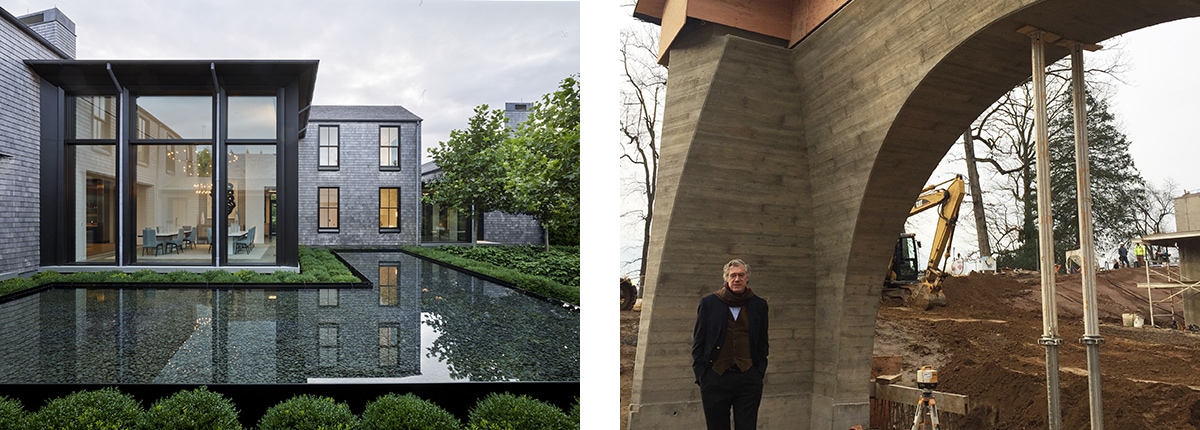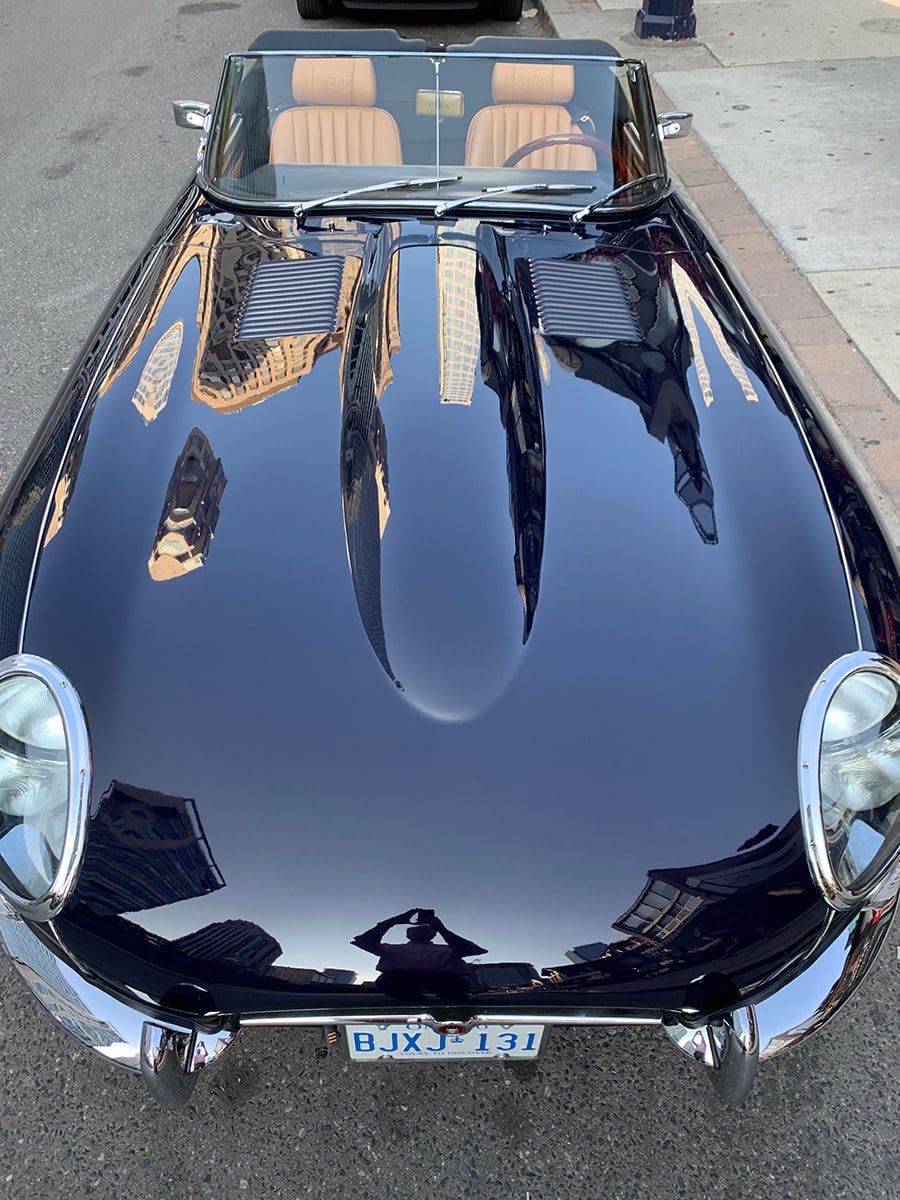Final Take Tom Kligerman Architect
An architect shares his perspective on the world.

Left: Hoine house, a project by Ike Kligerman Barkley. Photography by Richard Powers.
Right: The architect under a stone archway.
DREAM TIME
I think of architecture as sculpture—explorations in three-dimensional geometry—at the scale of a house. Buildings I’m drawn to are deeply sculptural. Massive and carved like buildings by Andrea Palladio, Francesco Borromini, Armando Brasini, Henry Hobson Richardson, and Sir Edwin Lutyens. Or it can mean buildings that are more skeletal, like the work of Mies van der Rohe and Auguste Perret or even Gothic buildings like Sainte-Chapelle in Paris. And there are so many buildings by anonymous architects that I find inspirational: spindly stick style and Victorian buildings or mission churches in Southern California.

BRIGHT IDEAS
I am inspired by almost everything. Certainly by what I see but also by the way creative people think. Whether you are a musician, a novelist, or a choreographer, most ideas start as a vague notion. Maybe something you’ve thought of while daydreaming, the elegant lines of a sportscar, maybe an idea spurred by a tune you heard or an art show at a museum. As any project develops it begins to give clues to the next steps, takes on a life of its own, and begins to tell you what to do. The best work is about ideas.
THE BEGINNING
I knew I wanted to be an architect in seventh grade. I went to a very progressive school in New Haven, Connecticut, the Foote School—the best school I ever went to. I dreamed up modern houses, drew floor plans and perspectives, made cardboard models. I think of myself as lucky—so many people that I knew in school did not know what they wanted to do. I found something that I loved early on. My work allows me to draw and paint, travel and dream.
TIME TRAVEL
I want to visit New York City, in the decade between 1900 and 1910. I would love to see the city when it was really raw. When there were still wood buildings and Manhattan was largely countryside and farms. I would love to see the buildings marching up 5th Avenue. I would love to see the wharves under a tangle of bowsprits and masts, or Peacock Alley and people dressed in hats and floor-length dresses. The clearing for the old Pennsylvania Station; a trip through Five Points—if I were brave enough. I would love to meet Stanford White…and Evelyn Nesbit. I would love to see a time when the advertisements were stencil letters on the sides of brick buildings or on blade signs hanging out in front of shops. It would be exciting to see this metropolis on the verge of exploding.
HAND MADE
We start every project by hand. Our early presentations are a combination of pencil sketches, watercolor images, and some general hand-waving. We are a firm with one foot in the old world and one in the modern one.
TREND ALERT
Education. I mean deep dives into the history of architecture, art, and interiors. Any designer worth his or her salt—modern, traditional, or otherwise—has a command of what went before. Great designers and architects understand their place in the arc of design history. I see so many missed opportunities, disappointing designs, half-hearted attempts at designing something beautiful. I understand that beauty is subjective. But I think designers and architects need to know enough from truly looking at the rich canon of past design so that they can set up a problem for themselves and solve it in an intelligent, purposeful, and interesting way.
IF I WERE A CHAIR
Gerrit Rietveld’s Zigzagstoel, 1937-40
I WISH I KNEW
Old English
